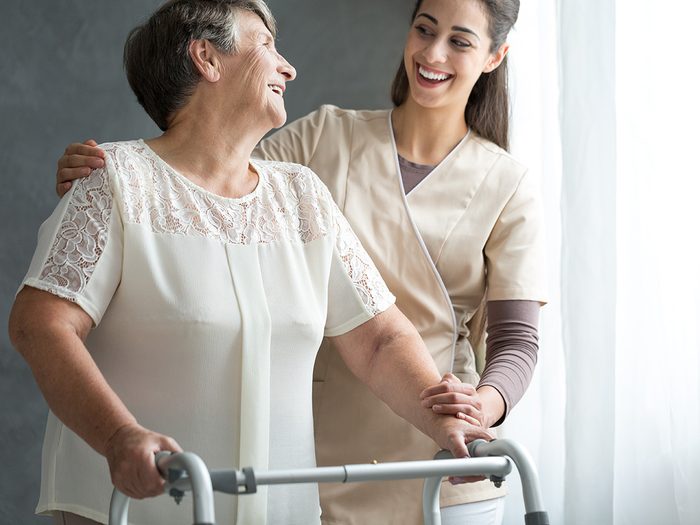
Know your Osteoporosis risk
Osteoporosis is characterized by weak bones that are more likely to break. According to the National Osteoporosis Foundation (NOF), 54 million Americans either have osteoporosis or are at risk for it due to low bone mass. “The main concern in osteoporosis is the increased risk of fractures,” says Amy Laude, MD, a family physician with UT Physicians-Southwest. “Using the FRAX [Fracture Risk Assessment] tool you can calculate your own risk of having an osteoporosis-related fracture.” Some factors that increase your risk include a slender body frame, a family history of osteoporosis, and ethnicity, since Caucasian and Asian cultures have a higher risk for osteoporosis. The CDC says a family history of the disease may lead to earlier screening.
6 Signs You’re at Risk for Osteoporosis
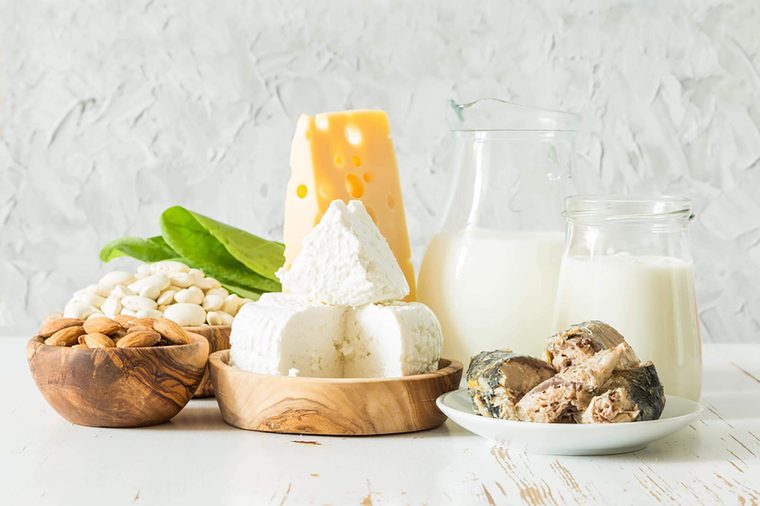
Choose calcium
The osteoporosis definition is a significant loss of bone mineral, and the primary bone mineral at stake is calcium, says Jonathan Lee, MD, attending physician, Orthopedics, Montefiore Health System. “Approximately 99.5 percent of the body’s calcium supply is stored in bone,” he says. “When more calcium is needed, the bone is called upon to release some of its supply — if it is not adequately restored, bone becomes brittle.” The NOF recommends women and men get 1,000 mg of elemental calcium a day during midlife. The need rises to 1,200 daily after age 50 in women and after age 70 in men.
9 Signs You’re Not Getting Enough Calcium
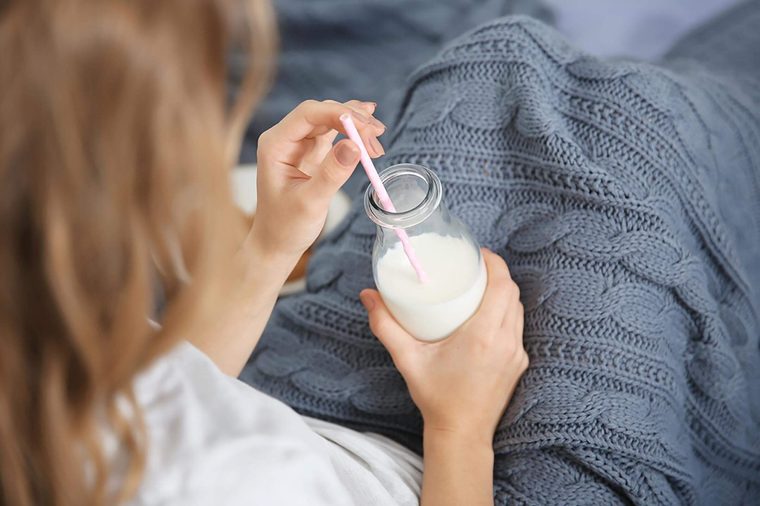
Drink your milk
“The best way to get the recommended amount of calcium is through the diet,” says Abby Abelson, MD, FACR, chair of the Cleveland Clinic’s Department of Rheumatic and Immunologic Diseases. “Calcium from milk and other dairy products are usually well-absorbed, and a rough estimate of the amount of calcium is 300 mg per serving — for example, an 8-ounce glass of milk contains about 300 mg of calcium.” Low-fat and skim milk, nonfat yogurt, and reduced-fat cheeses (except cottage cheese) are healthy sources of the calcium you need to build strong bones.
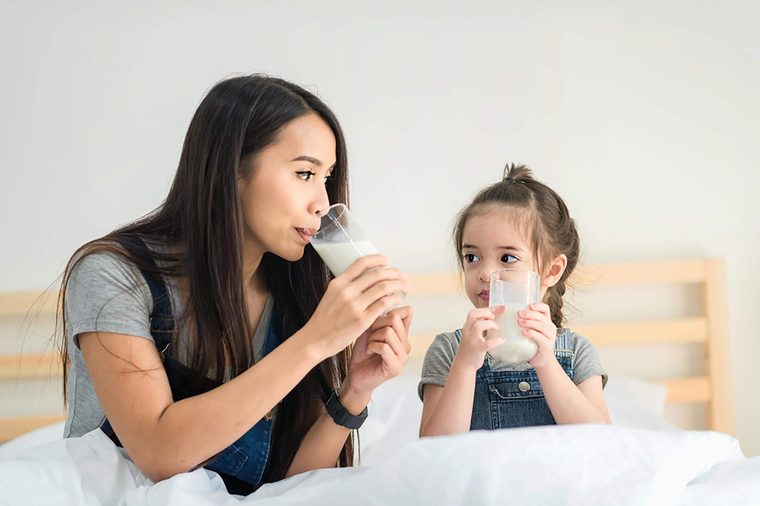
Start on calcium young
Although we think of it as a disease that affects older people, one way how to prevent osteoporosis is to begin at an early age. “Remember that we reach our peak bone mass by age 25 to 30, so it is especially important for young people to get enough calcium,” Dr. Laude says. “Children age 9 to 18 should get 1,300 mg a day.”
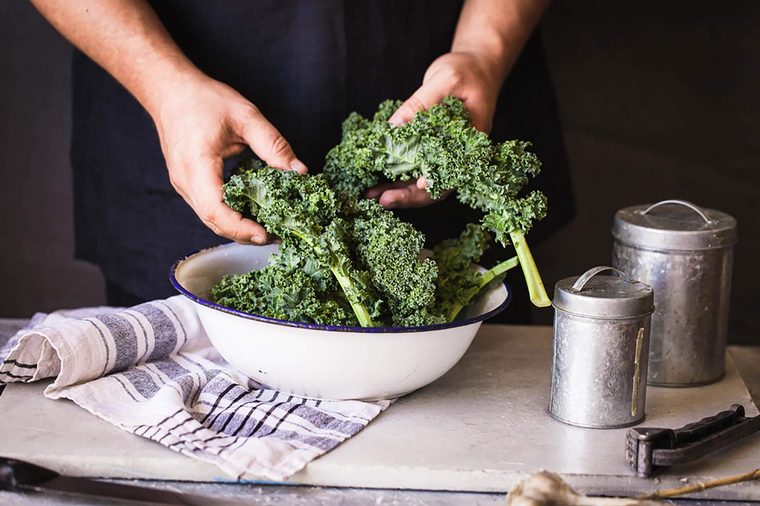
Eat greens with gusto
Leafy green vegetables have lots of calcium — plus the potassium and vitamin K you need to block calcium loss from bones. “Other sources of calcium for those who are lactose intolerant include green leafy vegetables, such as broccoli and kale, as well as cooked turnip greens, dried figs, orange or fruit juice with added calcium, and oranges,” says Kathy Mulford, MS, CRNP, ONP-C, director of the Bone Health Center University of Maryland St. Joseph’s Medical Center/Towson Orthopaedic Associates. Also try bok choy and Swiss chard.
10 Affordable Superfoods You Should Be Eating Every Day
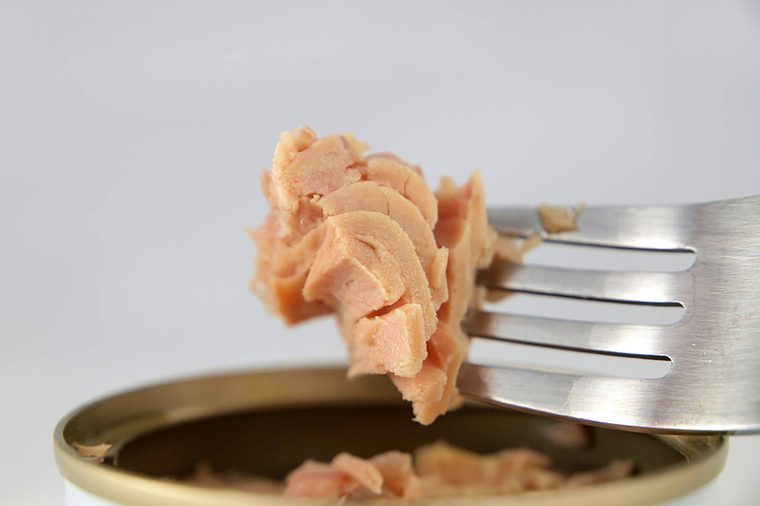
Go fish
Canned sardines and salmon, eaten with their bones, are also rich in calcium. “Canned salmon has 183 milligrams in a 3-ounce serving, making it a beneficial food for bone building,” says registered dietitian and fitness expert Erin Palinski-Wade, RD, CDE, author of Belly Fat Diet For Dummies. “Some fish, such as salmon, contain a source of vitamin D that helps your body to use calcium to build bone.” Mackerel and other oily fish are rich in vitamin D.
15 Foods to Eat for Glowing Skin and Healthy Hair
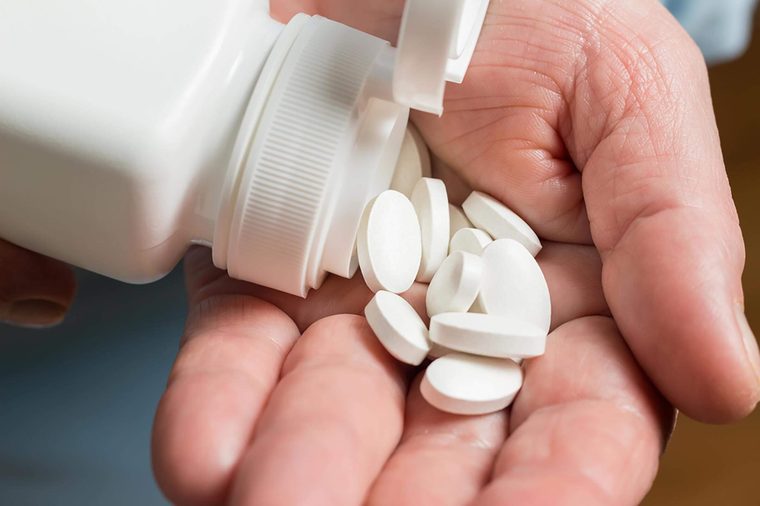
Consider calcium supplements
Are you getting enough calcium? If you’re not consuming as much as you should be through your diet, you can always take a supplement. But because the body can absorb only a limited amount of calcium at once, take supplements in two or three doses during the day, preferably with meals. “It is best to divide calcium intake into no more than 500 mg at a time throughout the day,” Dr. Abelson says.
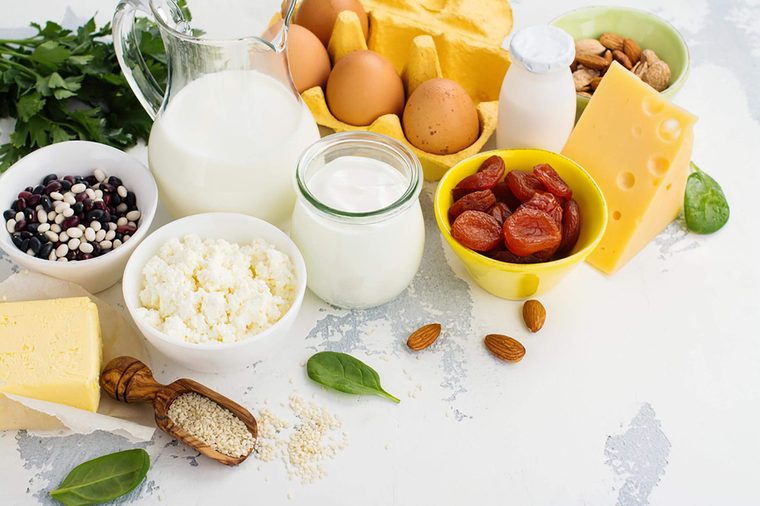
There’s such a thing as too much calcium
Among the vitamin mistakes you might not realize you’re making is actually getting too much calcium. “We have conflicting data on whether or not calcium supplements increase risk of kidney stones and cardiovascular disease, such as strokes and heart attacks,” Dr. Laude says. “Calcium obtained through the diet does not appear to increase risk, so aim to get most of your calcium through food and drink.” Add up about how much calcium you’re getting through you’re diet, then add supplements only as needed — Dr. Abelson recommends not exceeding 2,000 mg per day in total.
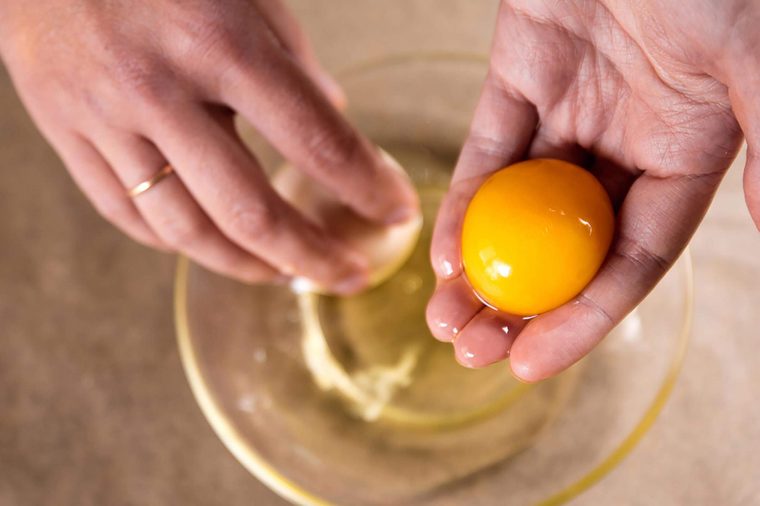
Take vitamin D
If you’re taking a supplement, make sure it contains vitamin D. “Vitamin D is required for the body to successfully absorb calcium from the gastrointestinal tract,” Dr. Lee says. In addition to supplements, “good sources of vitamin D include fatty fish, egg yolks, and milk fortified with vitamin D.” It’s best obtained though food sources, but it can be difficult to get a sufficient amount through diet, Dr. Abelson says.
Vitamin D May Just Be the Answer to Prevent this Degenerative Disease

Get outside
You can also try to get vitamin D though sun exposure (10 to 15 minutes a day) — the body manufactures vitamin D in response to sunlight. But, “most Americans, especially in colder climates, do not get enough sun exposure to generate enough natural vitamin D, and thus supplementation is essential,” Dr. Lee says. In addition, sun exposure can result in an increased risk of skin cancer, Dr. Abelson says, so supplementation may be preferred.
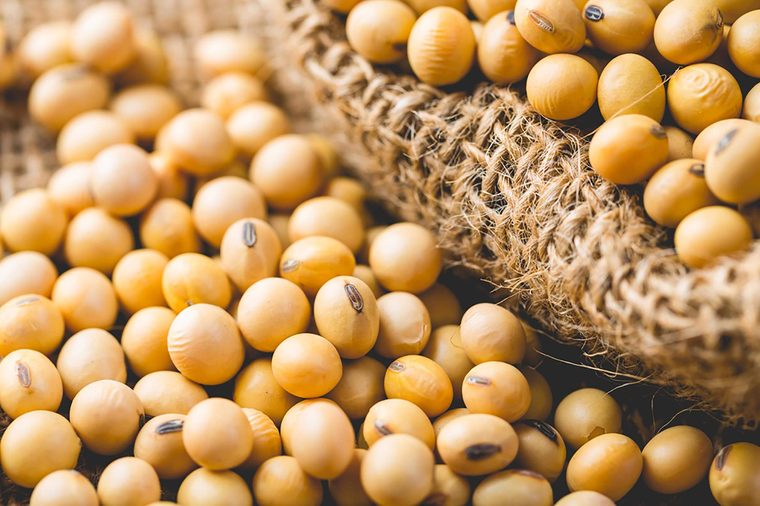
Serve yourself soy
Add soy to your diet — it just might protect against osteoporosis. Soy contains not only calcium but also plant estrogens, and it seems to help maintain bone density. “Just half a cup of tofu contains 400 milligrams of calcium,” Palinski-Wade says. “The isoflavones in tofu may also aid in preventing osteoporosis after menopause,” according to research. Substitute soy flour for regular flour in recipes from pancakes to cupcakes. Nibble on roasted soybean “nuts” instead of peanuts. Reach for soy cereal and soy cheeses. Make malts and smoothies with soy milk.
Try this Blueberry-Celery Smoothie with soy milk.
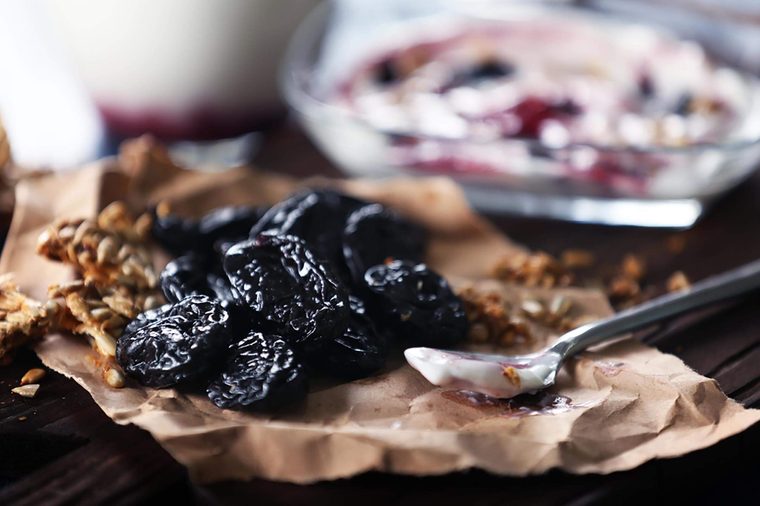
Pop some prunes
One food that can make your bones 20 percent stronger is prunes. “Research has shown that eating five to six prunes per day — a little over a serving — may help prevent bone loss,” Palinski-Wade says. “By simply adding prunes on top of your salad, into a trail mix, or enjoying them as a snack, you may be promoting bone health as well as increasing your intake of fiber and nutrients.” Prunes (otherwise known as dried plums) have several nutrients that benefit bones, such as vitamin K, magnesium, and potassium.
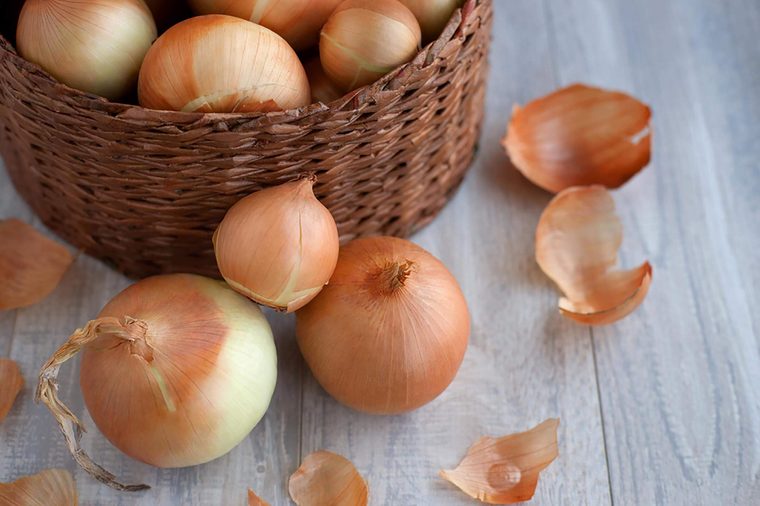
Eat your onions
Another potential bone-boosting food: onions. “One study found that a compound in white onions reduced bone breakdown in animal studies, but this has not yet been studied in humans,” Palinski-Wade says. In the rodent study, those fed one gram of dry onion daily experienced a 20 percent reduction in the bone breakdown process that can lead to osteoporosis. “Adding onion into the diet can be a great way to boost your intake of vegetables each day, so a potential bone benefit can be even more helpful to overall health,” Palinski-Wade says.
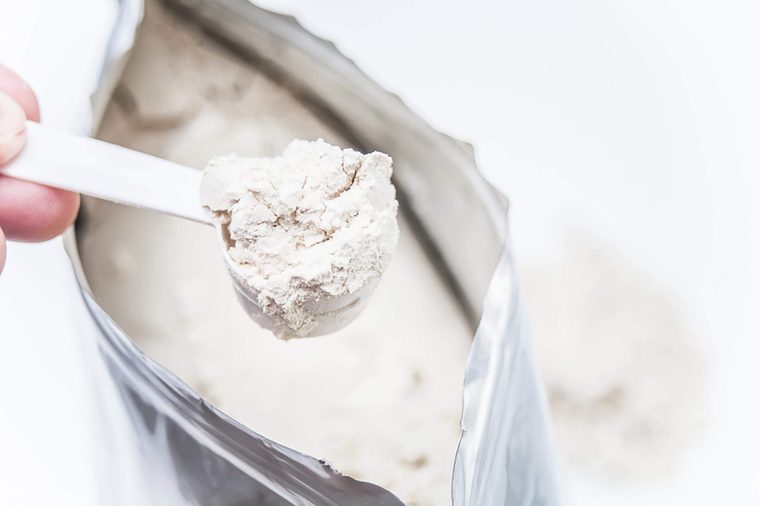
Don’t overdo protein
When it comes to protein, stick to the RDA of 50 grams daily for women, 63 grams for men — many Americans eat twice that much, but high protein intake can increase the amount of calcium excreted from the bones, as that’s a natural part of the body digesting calcium. “Diets very high in protein may increase calcium losses in the urine, which can weaken bones over time,” Palinski-Wade says. “Aim to keep your protein intake between 15 and 30 percent of total calories, especially if you are already at risk for osteoporosis.”
6 Surprising Foods Bursting with Plant Protein
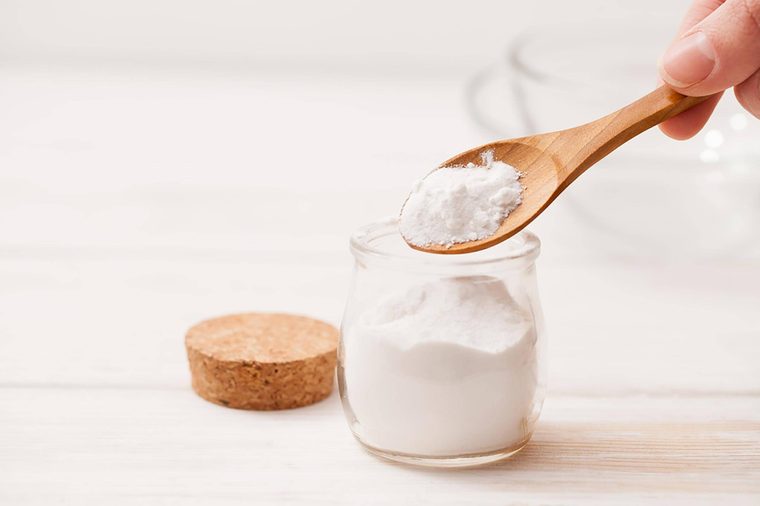
Skip sodium
Too much sodium could lead to needing more calcium, according to the National Institutes of Health, so try to cut back on salt in your food. “A diet excessive in sodium can increase calcium losses in urine, which may weaken bones over time,” Palinski-Wade says. “Aim for 2,300 mg of sodium per day or less.”
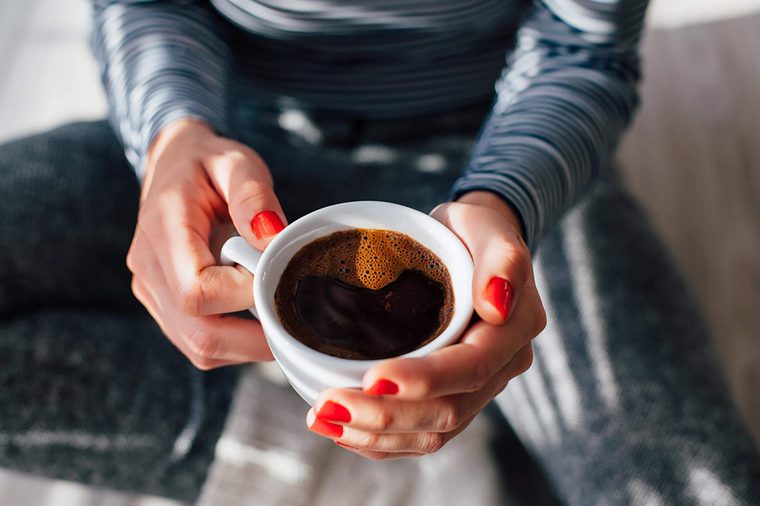
Limit caffeine
Reduce your caffeine intake to the equivalent of three cups of coffee a day, since caffeine also causes the body to excrete calcium more readily. “It’s best to take in less than 400 mg of caffeine daily,” Dr. Abelson says. For those at risk of osteoporosis after menopause, Palinski-Wade suggests an even lower amount —300 mg per day. “In elderly women, high levels of caffeine may predispose them to increased bone loss, especially in the femur,” she says.
How Much Caffeine Are You Consuming?
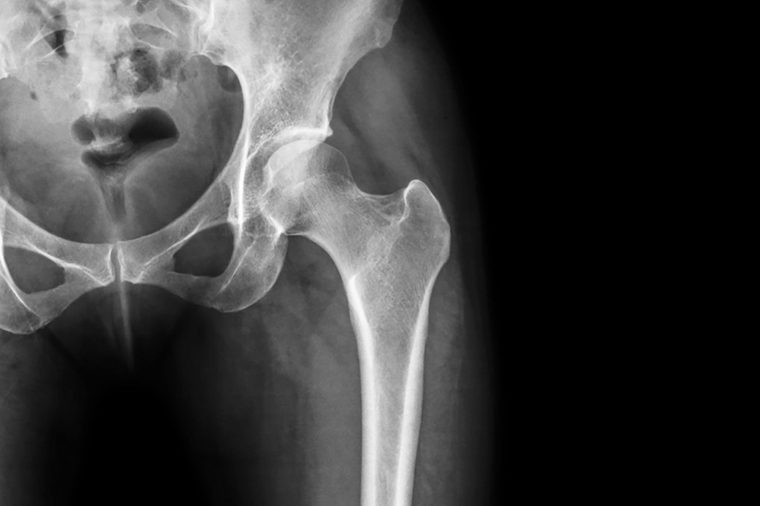
Test your bones
“All women age 65 and older should have a bone density scan (DEXA) to assess their fracture risk,” says Heather Hofflich, DO, FACE, Professor of Medicine Departments of Endocrinology and Internal Medicine UC San Diego Health System. “This test assesses the bone density in your spine and your hips, and can help predict your fracture risk by telling you if you have normal bone density, low bone mass (osteopenia), or osteoporosis.” Younger women with risk factors may be screened earlier. Depending on your results, you may be rescreened anywhere from one to 15 years later.
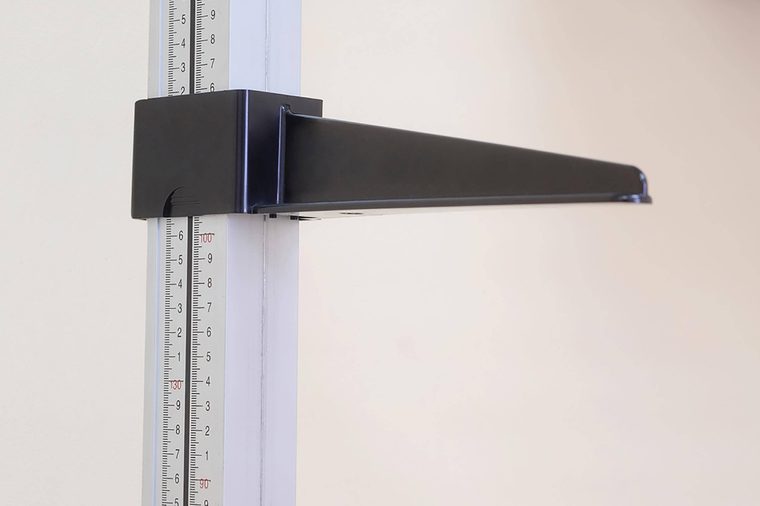
Get measured
Ask your doctor to measure your height on an annual basis, says Dr. Lee. Losing a few millimeters or more can be an early sign of undiagnosed vertebral fractures that occur with osteoporosis. “In a vertebral compression fracture, the vertebra, which is weakened due to lower bone mineral density, collapses,” he says. “If there is concern for a vertebral compression fracture, your doctor will examine you and often recommend imaging studies,” such as X-ray, CT, or MRI. The main symptom is pain right in the middle of the back.
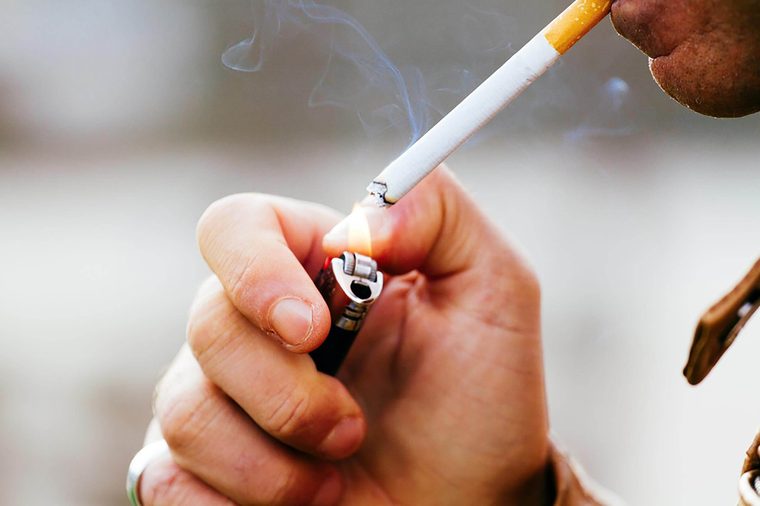
Quit smoking
Among 80-year-olds, smokers have up to 6 percent lower bone-mineral density, with one in eight hip fractures in women linked to long-term cigarette use, according to a landmark study. Plus, fractures heal more slowly in smokers, and are more apt to heal improperly. “Bones are constantly undergoing a complex process of breaking down and being built back up, and smoking affects this process in many ways,” Dr. Laude says. “It decreases bone-protecting estrogen for both men and women, and decreases absorption of calcium.” Dr. Abelson says every effort should be made to stop completely to reduce osteoporosis risk — here is one secret to quitting smoking.
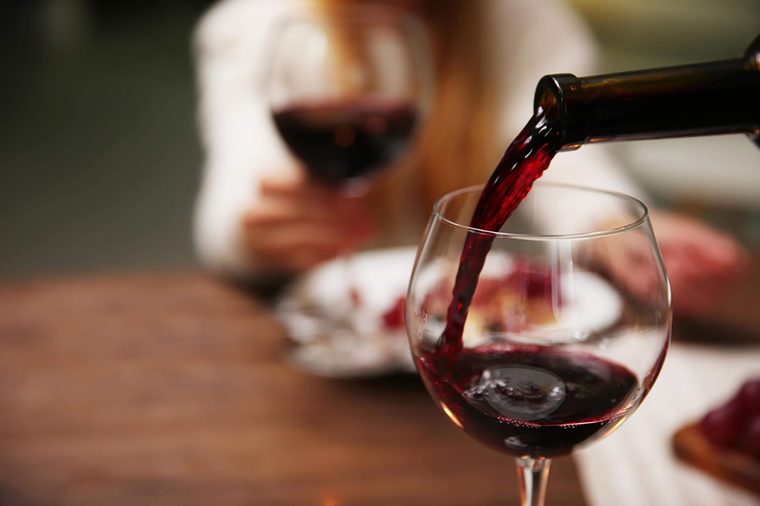
Avoid excessive alcohol
Although very moderate amounts of alcohol have been shown to help bone density, too much alcohol prevents your body from absorbing calcium properly. Plus, “very high levels of alcohol intake on a regular basis can damage the liver, directly impacting vitamin D activation in the body,” Palinski-Wade says. Dr. Abelson advises avoiding alcohol intake more than one drink a day for women and two for men.
Blake Lively and 5 Other Stars Who Don’t Drink Alcohol, Ever
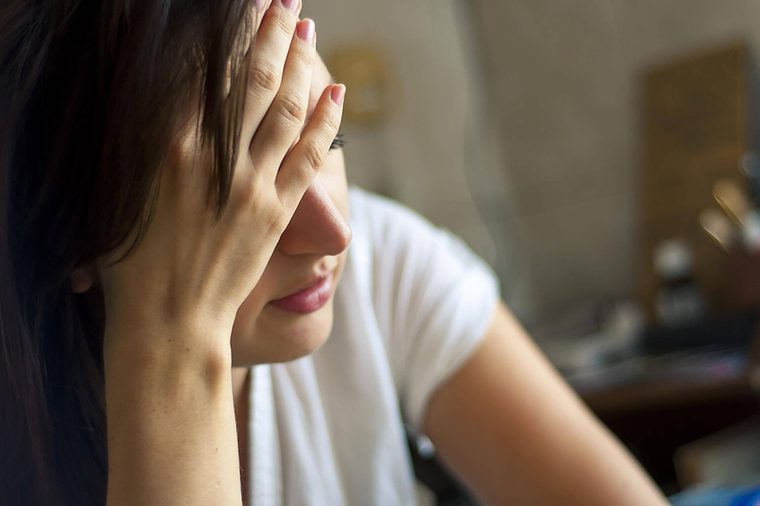
Don’t let depression linger
Depression causes your body to produce cortisol, a stress-related hormone that saps minerals from bones. One study showed that women with clinical depression had lower bone density in their hips and spines. But, antidepressants like Prozac and Cymbalta have also been linked with decreased bone mineral density and increased risk of fractures, says Dr. Lee. So talk to your doctor to figure out how best to manage your condition.
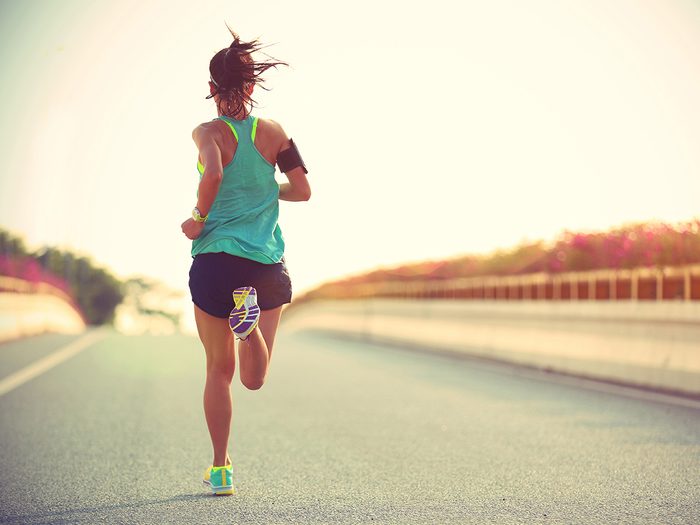
Get with the program
One of the subtle but powerful health benefits of exercising other than weight loss is better bone health. According to the NOF, an inactive lifestyle is a risk factors for osteoporosis. “Bone is living tissue, and will respond to the load that it is subjected to,” Dr. Lee says. “The more you use it, the more it will adapt and strengthen—and likewise if it is not subjected to loading, it will waste away.” Palinski-Wade says to aim for a minimum of 30 minutes of physical activity each day with at least three days, including some weight-bearing exercise.
Palinski-Wade suggests high-impact plyometrics, which are exercises that incorporate jumping. A study from Brigham Young University found that exercises involve jumping improved bone mineral density in premenopausal women. But only do them if your bones are already in good shape to begin with.
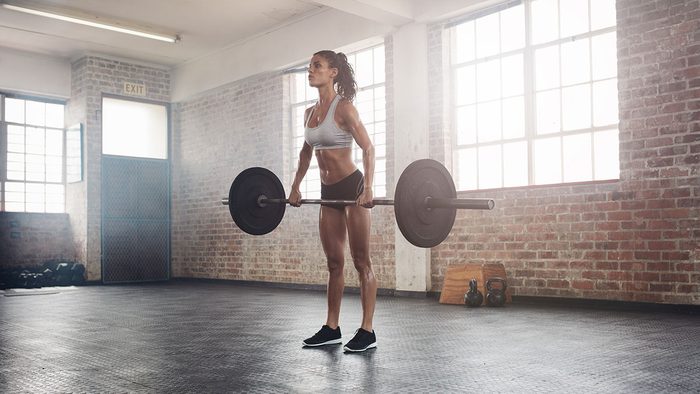
Try strength training
A regular program of weight-bearing or resistance exercise helps stop bone loss, and may be one of the few ways to build bone as you age. “Weight-bearing exercise forces you to work against gravity, placing stress on the bones that helps to strengthen them,” Palinski-Wade says. “This includes weight lifting, Pilates, aerobic dance, dancing, running, and jumping rope.” Also do body weight exercises, like burpees, squats, lunges, sit-ups, and planks, that use your own weight and don’t require special equipment. Or, try these resistance band exercises to work your entire body.
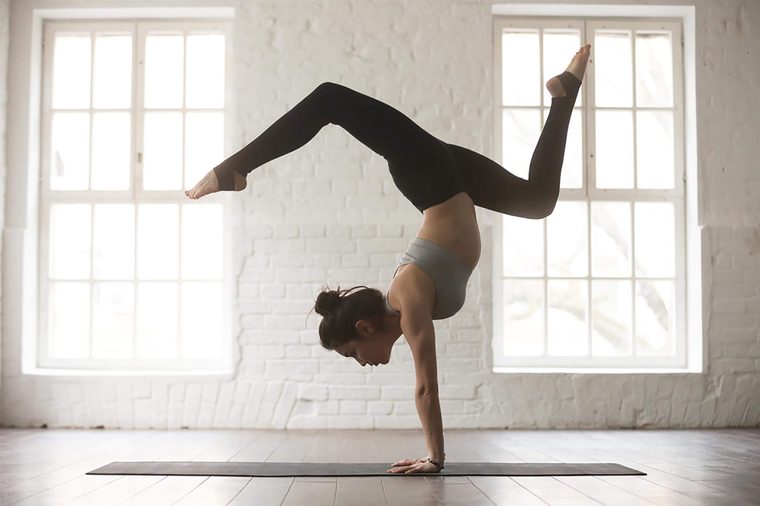
Build your balance
Working on your balance is another important exercise for bone health, research says. Try tai chi or yoga. “Holding static poses that require you to support your own body weight can stress the bones, strengthening them,” Palinski-Wade says. “These activities also improve posture and balance, helping to reduce fall risk.” If you already have weakened bones, preventing falls is critical to helping prevent fractures.
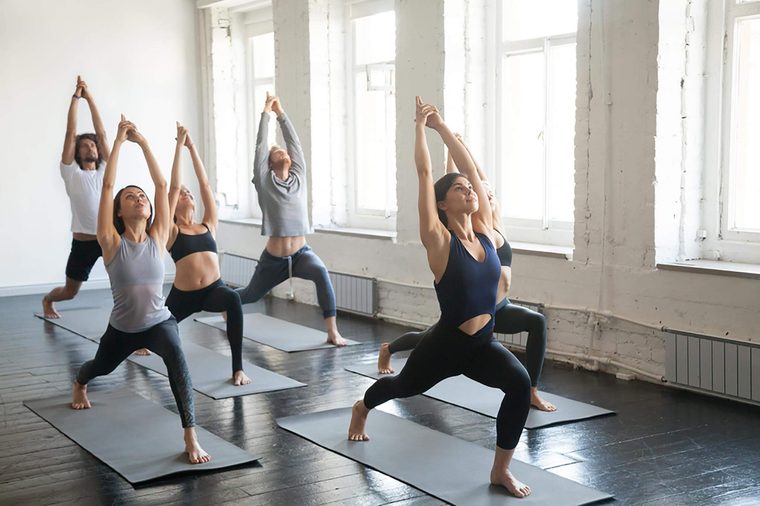
Finesse your flexibility
Although flexibility doesn’t impact your bones directly, even simple stretching can keep your muscles loose and joints working well. “These forms of exercise can improve range of motion and posture, which can in turn help to reduce the risk of fall and injury,” Palinski-Wade says.
This One-Week Stretching Program Will Help You Become More Flexible

Skip some other exercises
Swimming is a wonderful full-body exercise that’s easy on the joints, but it won’t help your skeleton — your bones and muscles must work against gravity for a bone-building effect. “Swimming and biking are not considered weight-bearing activities, and are not the best forms of exercise for bone building,” Palinski-Wade says. In addition, “for those who already have bone loss, discuss any activities that could increase your risk of fracture with your doctor, such as activities that are high impact, involve twisting motions, or activities with high risks of falls.” These might include running, skiing, skating, and golf, says the National Institutes of Health.
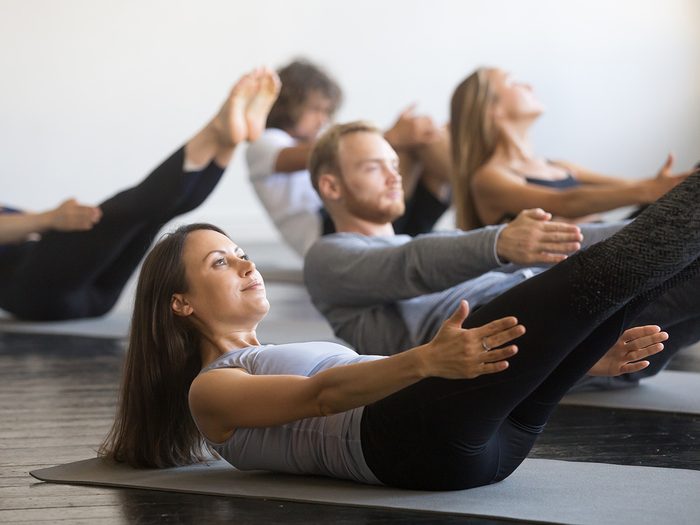
If you’ve had a fracture, stay active
Even though the workouts you can do might be more limited, it’s still important to keep exercising after a bone break. “A sedentary lifestyle increases your risk of many health problems, and staying active may actually prevent future falls and fractures,” Dr. Laude says. “Work closely with your orthopedic doctor and/or physical therapist to design an exercise program to get you up and moving after your fracture.”
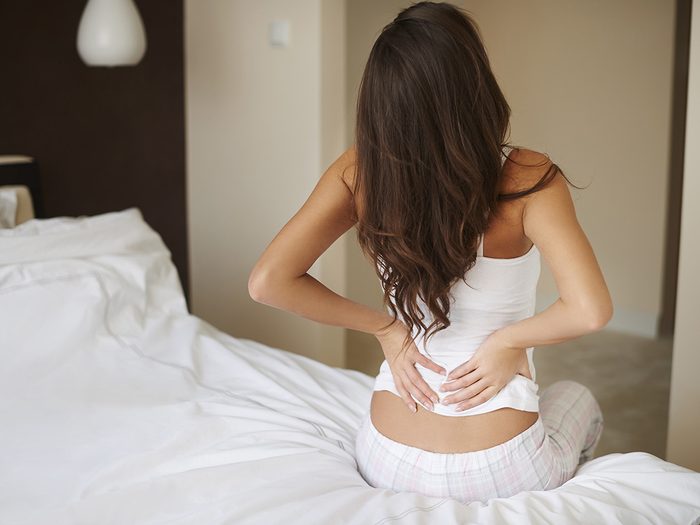
Pay attention to posture
“Practicing good posture is essential to keeping the spine in alignment and preventing stress on certain areas of the spine,” Dr. Hofflich says. “Good posture helps to prevent kyphosis, which is a forward curvature of the spine.” Palinski-Wade also says that a slumped posture can reduce balance and increase fall risk.
This Workout Will Give You Better Posture and Relieve Back Tension
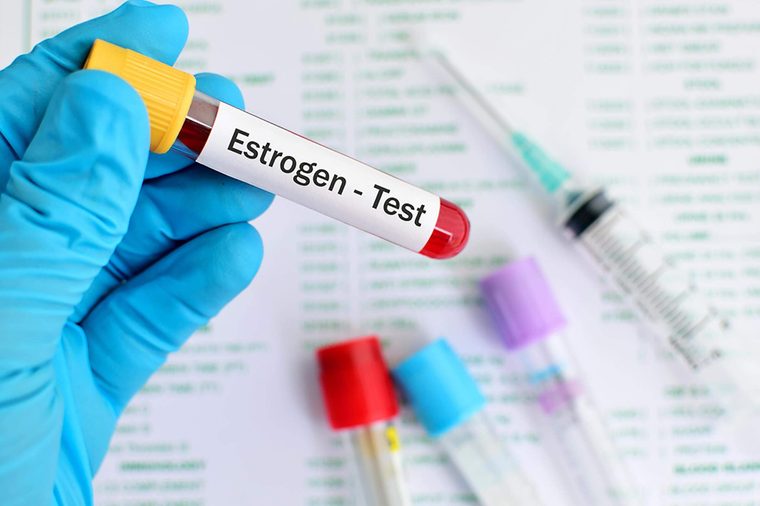
Expect the effects of estrogen
One of the things your period secretly wants to tell you is how important it is for osteoporosis prevention. “Once a female begins menopause, she loses estrogen. And estrogen plays a key role in minimizing bone loss during normal bone turnover,” Mulford says. “Also, women who experience early menopause or amenorrhea [lack of menstruation] for long periods are at higher risk for bone loss and developing osteoporosis due to the lack of estrogen.” Dr. Laude advises women who’ve stopped menstruating before age 47 to talk with their doctor about estrogen replacement, early bone density screening, and a diet and exercise program to maximize bone health.
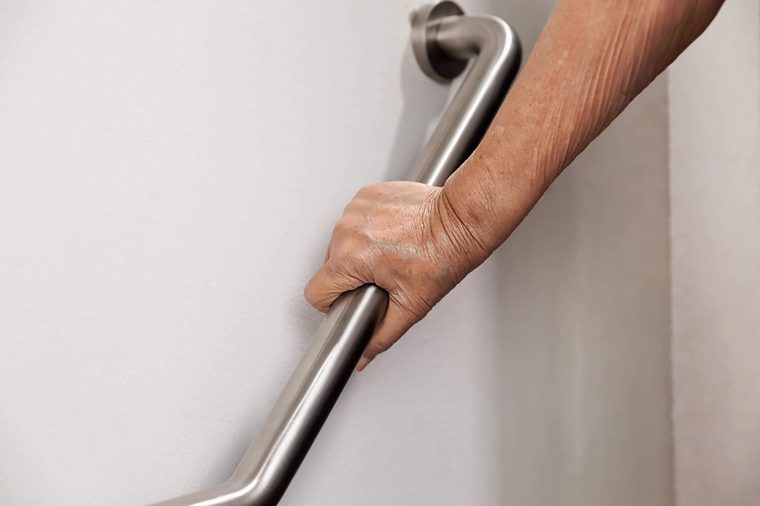
Prevent falls
Although it won’t prevent osteoporosis directly, making your home fall-proof can guard against the devastating effects of a fracture. “Make sure that you keep floors free of any clutter or cords, and that carpeting is secure,” Dr. Hofflich says. “Have handrails around hard-to-reach areas like stairs, the bathroom and shower, and use a nonskid rubber mat in bathtub.” In addition, wear grippy slippers to avoid slipping on floors, and make sure outside walkways are cleared of snow and ice.
Inside the home, mind the pileup of clutter. “Hoarding is another issue that can lead to falls,” says senior care expert Anthony Cirillo, FACHE, ABC, president of The Aging Experience. In addition to clearing out pathways, make sure telephones are placed throughout the house at low levels to reach in case of a fall, or consider wearing a medical alert device you can press if you can’t get up.
Also consider having your sight and hearing checked, because declining vision and hearing places you at risk for falls, and falls lead to fracture. Keep your home well-lit, and consider installing night-lights.
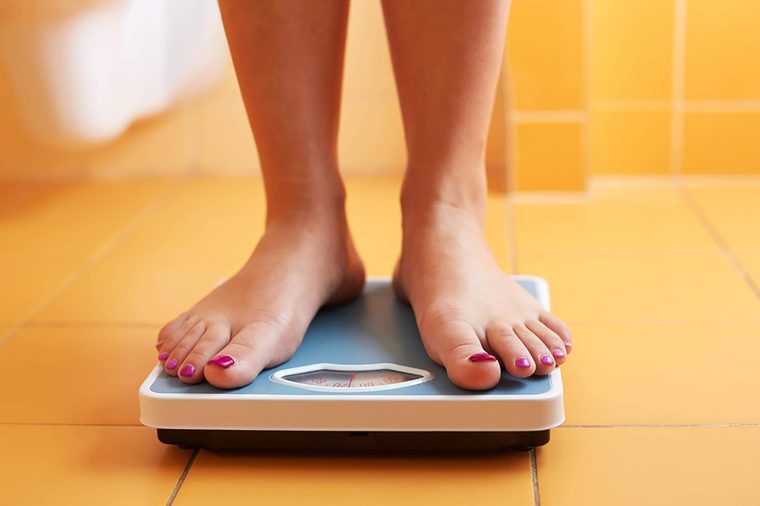
Make sure you’re not underweight — or overweight
Although most of us worry about weighing too much, studies show it’s actually important not to have a BMI (body mass index) under 19. “The bones need to be adequately loaded in order to stimulate them, enough to respond to the load and generate more biomechanically ‘good’ bone,” Dr. Lee says. “In addition, those who are underweight might also be suffering from malnutrition, which wan contribute to osteoporosis as well.” Those who have eating disorders are at particular risk for osteoporosis, he says.
On the flip side, you shouldn’t weigh too much either. “Although increased body weight adds extra stress to bone, the metabolic conditions caused by excessive body weight or body fat levels offset this benefit,” Palinski-Wade says. “In a study of overweight teens with metabolic syndrome, bone mineral density was found to be reduced.” In addition, “being either underweight or overweight is likely to be associated with poor nutritional behavior,” Mulford says, as well as lack of exercise.
What’s Your Weight-Loss Personality?
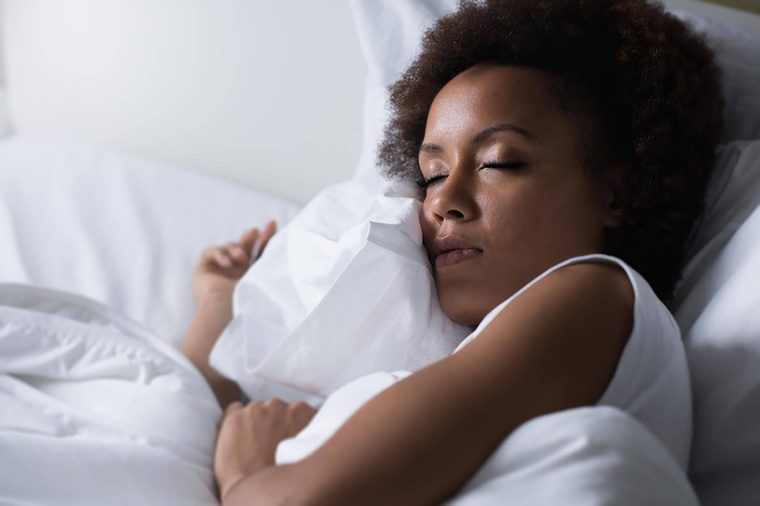
Get enough sleep
New research is showing how lack of sleep and sleep disturbances lead to poor bone health. One recent study found that a marker of participants’ bone formation in their blood was lower after several weeks of sleep restriction. “This altered bone balance creates a potential bone loss window that could lead to osteoporosis and bone fractures,” lead investigator Christine Swanson, MD, an assistant professor at the University of Colorado, said in a press release.
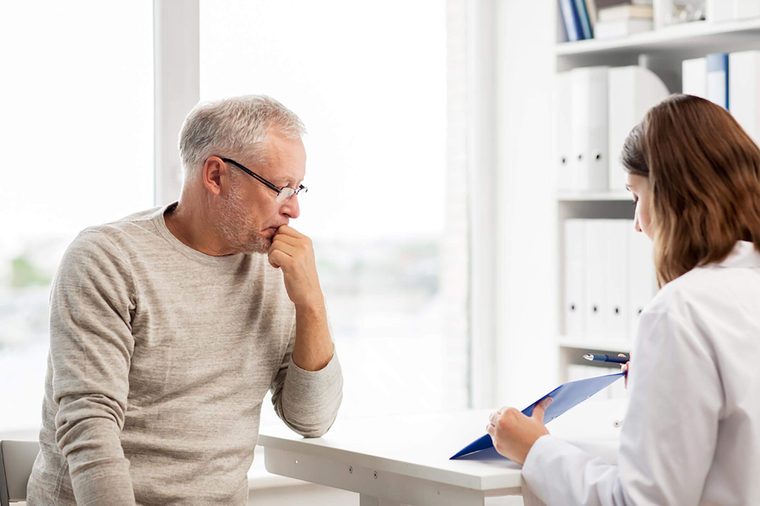
Men are at risk too
Among the surprising health risks men need to watch out for is osteoporosis. “Men experience hormonal loss later in life, and therefore are at high risk for accelerated bone loss after age 65,” Mulford says. Although they don’t go through the rapid loss that occurs with menopause, the slow loss can still lead to osteoporosis, Dr. Laude says. The NOF recommends men be screened over age 70, but the U.S. Preventative Services Task Force does not, so “the decision to check a bone density scan in men can be based on risk factors and the individual clinical decision,” Dr. Hofflich says.
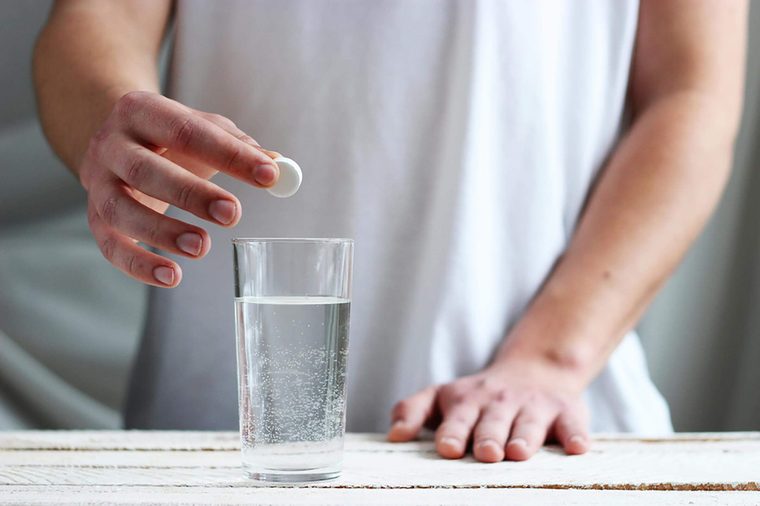
Ease up on antacids
There are medical reasons you shouldn’t ignore heartburn — and just popping antacids could lead to risks of its own. “Some medications used to treat reflux and over-the-counter heartburn medications can reduce your absorption of calcium, increasing your risk of fracture,” Dr. Laude says. “If you are taking a medication long-term, talk to your doctor about your bone health and the risks and benefits of your reflux medication.” These include proton-pump inhibitors like Prilosec and H2 blockers like Pepcid, says Dr. Abelson, so if you’re also taking calcium supplements, look for calcium citrate instead of calcium carbonate for better absorption.
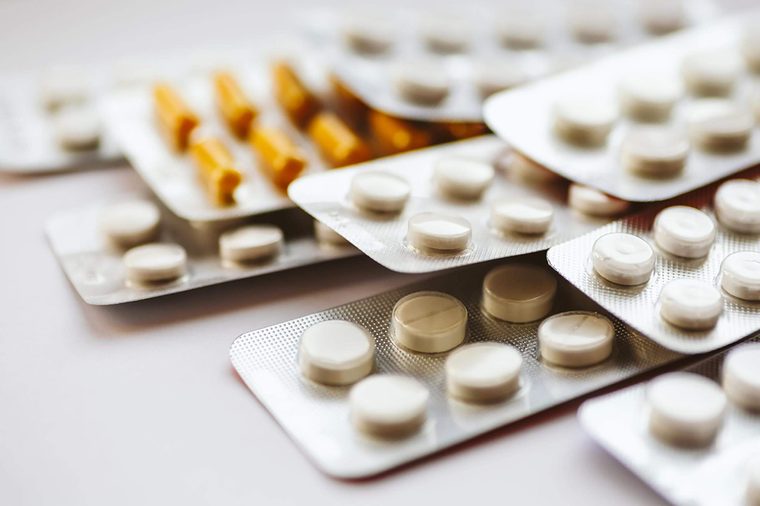
Check your meds
Other medications you take also affect your chances of osteoporosis, so talk with your doctor about calcium and vitamin D supplementation. Watch our for steroid-induced osteoporosis if you’re on prednisone or inhalers for asthma. “It seems that steroids have an effect on bone cells, causing alterations in both bone formation and remodeling,” Dr. Lee says. In addition, some anti-seizure meds have also been associated with low bone mineral density. “Reasons for this are not entirely clear, but some researchers attribute this to higher than normal vitamin D metabolism, and accelerated bone turnover,” Dr. Lee says.
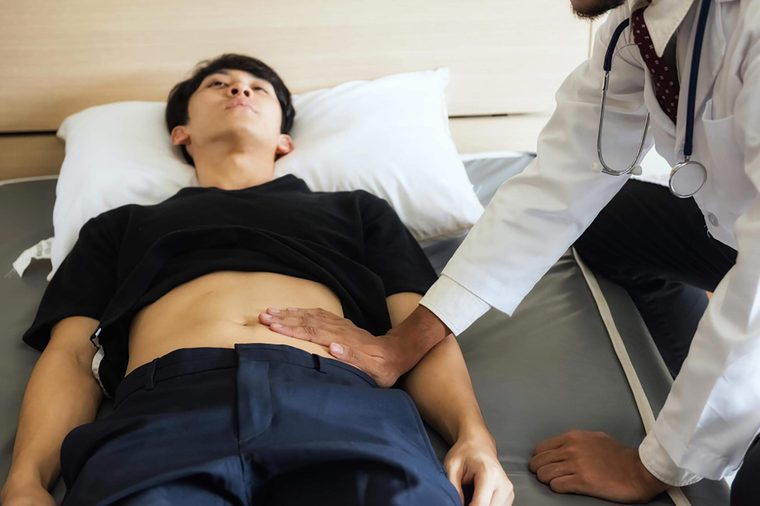
Go with your gut
Confer with your doctor about gastrointestinal conditions that can threaten calcium levels, and what countermeasures you may need. “Disorders of the GI system, such as celiac or Crohn’s disease, can contribute to osteoporosis by altering the absorption of calcium [in the gut],” Dr. Lee says. “For example, celiac disease can damage the lining of the gut and can interfere with calcium absorption.” Dr. Hofflich says irritable bowel disease (IBD) is another culprit.
The Healthy Gut Diet Plan: 10 Ways to a Better Microbiome
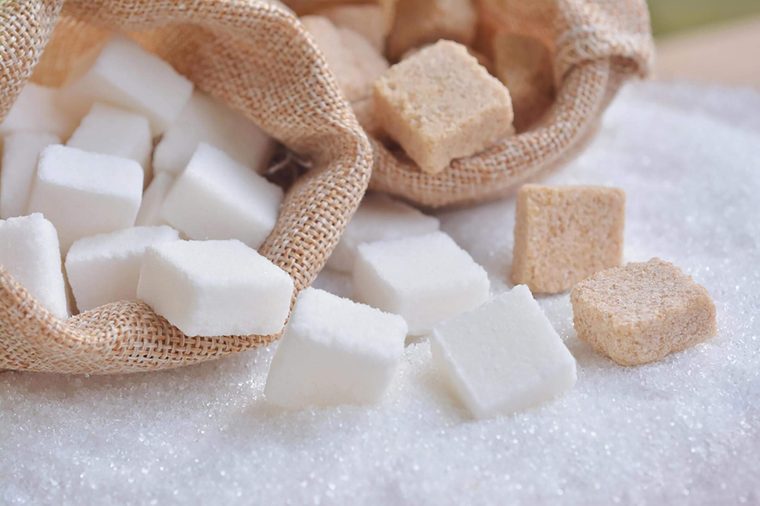
Reduce your chance of diabetes
Here’s another reason to make food swaps to reduce your sugar intake: Diabetes is a risk factor for low bone mineral density, possibly because high blood sugar may slow bone formation, Dr. Lee says. “According to a 2014 review article in the International Journal of Endocrinology, type-1 diabetics have a six-time increased risk of fractures, and this is due to lower bone mineral density,” he says.
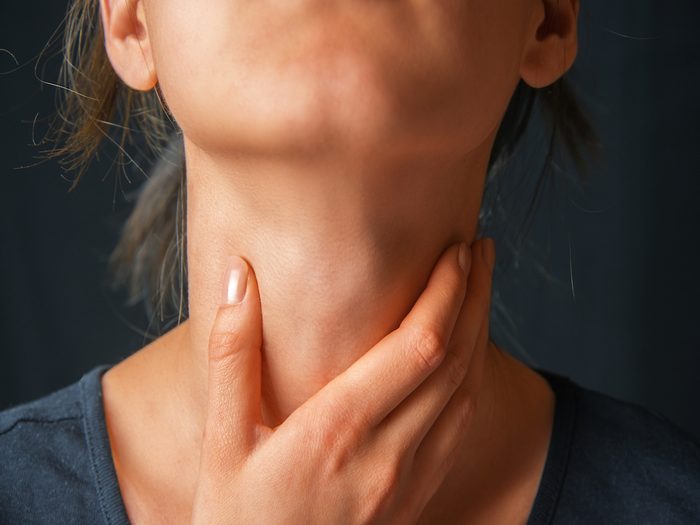
Get your thyroid under control
“Believe it or not, both low thyroid hormone and too much thyroid hormone can be contributing factors to low bone mineral density,” Dr. Lee says. “Too little thyroid slows bone development, while too much thyroid hormone creates a scenario where the bones are ‘older’ than the actual chronological age of the patient.” Dr. Abelson recommends close follow-up with your doctor to assure appropriate thyroid replacement levels.
13 Silent Symptoms of a Thyroid Problem
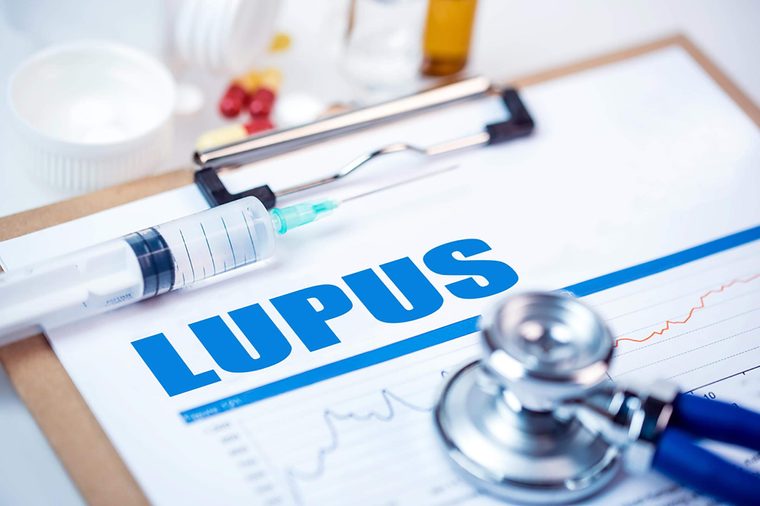
Manage autoimmune conditions
Autoimmune diseases, like rheumatoid arthritis and lupus, are linked with increased risk of bone loss. “Some studies report fracture risk to be five times greater in patients with lupus as compared to the general population,” Dr. Lee says. Reasons why may be related to steroid use, as well as decreased activity. “Rheumatoid arthritis is also a risk for osteoporosis as it directly affects the cells in bone that affect bone strength,” Dr. Abelson says. “Patients who take prednisone for rheumatoid arthritis are also at risk since it decreases calcium absorption.”
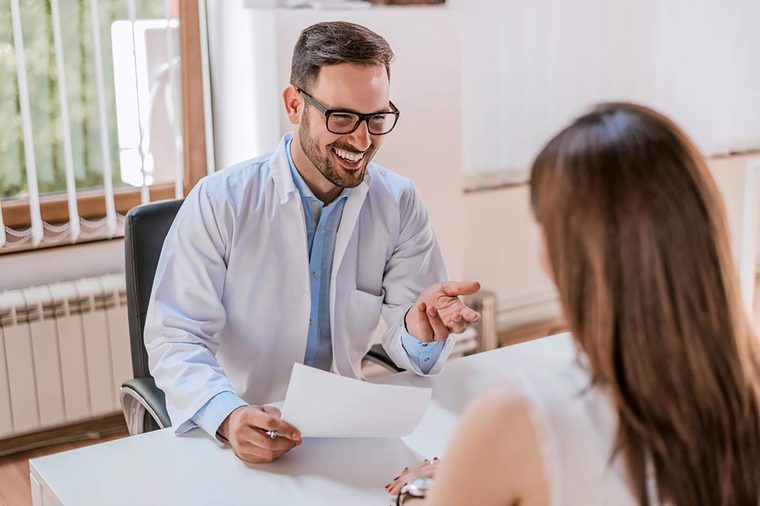
Get treatment early
If you’ve been diagnosed with low bone density (osteopenia), it’s important to start lifestyle modifications, like diet and exercise, to preserve and strengthen your skeleton. “If you have already had a fracture, please discuss with your clinician, who will order a bone density test,” Dr. Hofflich says. “There are many treatments that can build back bone density and also protect the bone from breaking down.” Talk with your doctor about what medications you may need.
Body Break! Hal Johnson and Joanne McLeod’s Top 5 Tips for Healthy Living
